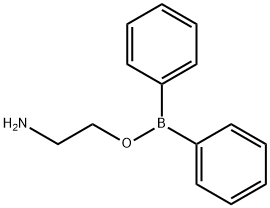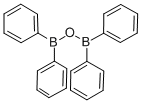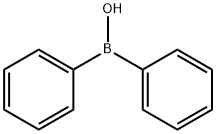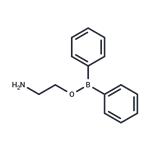Description
2-Aminoethyl diphenylborinate (2-APB) is a modulator of intracellular calcium levels and transient receptor potential (TRP) channels. It inhibits calcium release induced by inositol-1,4,5-triphosphate (IP
3) in rat cerebellar microsomes (IC
50 = 42 μM) without affecting IP
3 binding to its receptor. 2-APB inhibits store-operated calcium entry (SOCE) in DT40 cells (IC
50 = 4.8 μM), as well as inhibits TRP canonical 6 (TRPC6) and TRP melastatin 8 (TRPM8) and activates TRP vanilloid 1 (TRPV1), TRPV2, and TRPV3
in vitro. It also inhibits calcium transients induced by the sarcoplasmic/endoplasmic reticulum Ca
2+-ATPase (SERCA) inhibitor thapsigargin in DDT1 MF-2 cells when used at a concentration of 75 μM. 2-APB inhibits differentiation of primary mouse brown adipocytes when used at concentrations ranging from 30 to 300 μM and reduces adipocyte triglyceride levels at 100 μM. It also increases the expression of
Ucp1 and
Pparg in primary mouse brown adipocytes. 2-APB (10 mg/kg) reduces protein levels of TRP melastatin 2 (TRPM2) in the rat hippocampus and improves learning and memory deficits induced by amyloid-β (25-35) in rats.
Chemical Properties
white crystalline powder
Uses
2-Aminoethyl diphenylborinate is used for the densitometric determination of flavonoids and TRP activator. It is also used to manipulate intracellular release of calcium ions and in preparation of apoptotic inducers. It serves as a reactant for preparation of apoptotic inducers and in membrane-permeable SOCE (store operated calcuym entry) inhibitor.
Uses
Ca release inhibitor, angiogensin II inhibitor
Definition
ChEBI: An organoboron compound that is diphenylborane in which the borane hydrogen is replaced by a 2-aminoethoxy group.
Synthesis Reference(s)
Journal of the American Chemical Society, 80, p. 5409, 1958
DOI: 10.1021/ja01553a022Journal of the American Chemical Society, 80, p. 5409, 1958
DOI: 10.1021/ja01553a022
General Description
A cell-permeable modulator of Ins(1,4,5)P
3-induced Ca
2+ release. Inhibits Ins(1,4,5)P
3-induced Ca
2+ release from rat cerebellar microsomal preparations (IC
50 = 42 μM) without affecting [
3H]-Ins(1,4,5)P
3 binding to its receptor. In liver cells, 2-APB inhibits store-operated Ca
2+ channels through a mechanism which may involve its binding to either the channel protein or an associated regulatory protein. Has no effect on the Ca
2+ release from the ryanodine-sensitive Ca
2+ store prepared from rat leg skeletal muscle and heart.
Biological Activity
A functional and membrane permeable D-myo-inositol 1,4,5-trisphosphate (IP 3 ) receptor antagonist (IC 50 = 42 μ M). Stimulates store-operated calcium (SOC) release at low concentrations (< 10 μ M) and inhibits it at higher concentrations (up to 50 μ M). Increases STIM-Orai channel conductance and limits ion selectivity. Modulator of TRP channels; blocks TRPC1, TRPC3, TRPC5, TRPC6, TRPV6, TRPM3, TRPM7, TRPM8 and TRPP2 and at higher concentrations stimulates TRPV1, TRPV2 and TRPV3. Also blocks specific gap channel subtypes.
Biochem/physiol Actions
Membrane-permeable modulator of intracellular IP3-induced calcium release.
References
1) Maruyama et al. (1997) 2APB, 2-aminoethoxydiphenyl borate, a membrane-penetrable modulator of Ins(1,4,5)P3-induced Ca2+ release; J. Biochem., 122 498
2) Varnai et al. (2009) STIM and Orai: the long-awaited constituents of store-operated calcium entry; Trends Pharmacol. Sci., 30 118
3) Togashi et al. (2008) Inhibition of the transient receptor potential cation channel TRPM2 by 2-aminoethoxydiphenyl borate (2-APB); Br. J. Pharmacol., 153 1324
4) Xu et al. (2005) Block of TRPC5 channels by 2-aminoethoxydiphenyl borate: a differential, extracellular and voltage-dependent effect; Br. J. Pharmacol., 145 405
5) Bai et al. (2006) Block of specific gap junction channel subtypes by 2-aminoethoxydiphenyl borate (2-APB); J. Pharmacol. Exp. Ther., 319 1452






